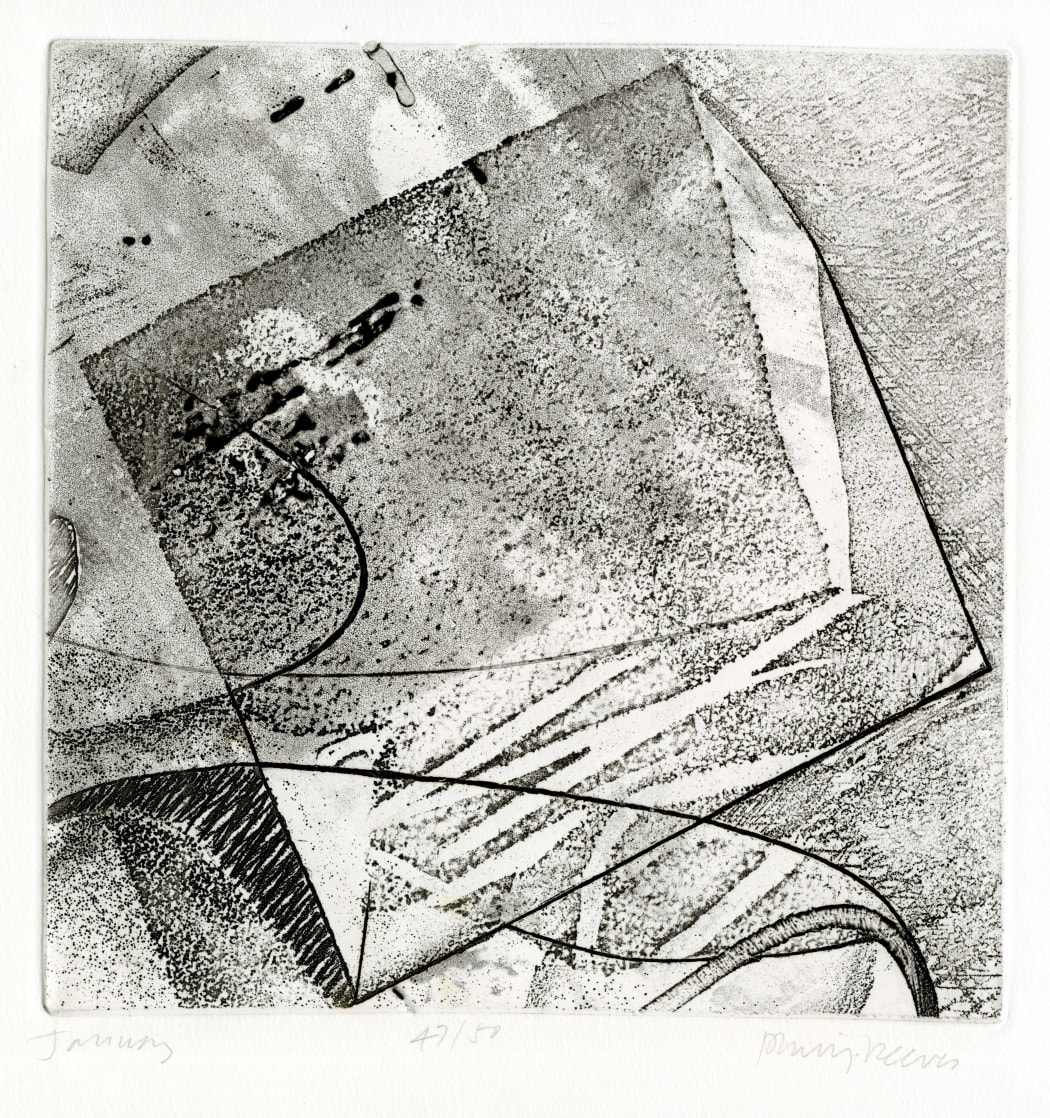
As a new year beckons, many of us will be filling in key dates, birthdays, anniversaries, holidays and medical appointments in our new 2024 calendars. So, we thought there would be no better opportunity to share a special group of prints from the Collections, the Peacock Calendar Suite of 1976.
Peacock Printmakers was founded in Aberdeen in 1974 by a group of artists, most of whom had graduated in Design from Gray’s School of Art. Included were Arthur Watson PPRSA, who in time would hold the office of Secretary and subsequently President of the RSA. Ian McKenzie Smith PPRSA, the energetic and visionary Director of Aberdeen Art Gallery, who held all three top offices in the Academy; Treasurer, Secretary, and President. And Ian Fleming RSA, the distinguished Glasgow printmaker who was the leading senior figure in the new development.
In 1975, Peacock undertook their first collaborative venture when five artists were invited to make a print for the Printmakers’ first suite. Learning from this experience, they decided to try something even more ambitious in 1976.
Setting a very strict size limit (25cm x 25cm) for each image, the Board invited a dozen artists to produce a print themed on a month of the year. The result was the Peacock Calendar Suite. Each print was published in an edition of 50 proofs. Individual prints sold for about £10 apiece with the entire set of 12 available at a discounted price of £100.
It proved a very popular venture. Outlays were recovered and a small profit made. Individual prints began selling before each contributing artist had received a set. It proved impossible therefore to ensure that each of the artists received a set with matching edition numbers - this is the case with the Academy’s set from the state of Willie Rodger RSA.
Peacock was keen to engage with a range of artists on this project. Some were staff members at Peacock, others established printmakers. The dozen also included works by others who were not familiar with the medium which they worked with, and some contributors had almost no previous printmaking experience. This resulted in some innovative solutions. Printing using oil-based inks, for example, enabled some subtle blending of colours in the screenprints which is not possible with water-based inks today. It also marked a very different stance from the then practice at the Glasgow and Edinburgh Printmakers’ Studios.

January: Philip Reeves RSA, Untitled. Etching.
Reeves was the head of Printmaking at Glasgow School of Art and had been involved in the founding in 1967 and 1972 respectively of the Edinburgh and Glasgow printmaking studios. In 1970, he was appointed Head of Printmaking at Glasgow School of Art. His compliance with the size constraints was simply to cut down an existing etching plate, which had already been used to edition a larger print. This is the sole etched work in the suite.

February: Bel Cowie, Untitled. Screenprint.
Cowie was one of thirteen staff, alongside Barbara Rae RA RSA, Fred Bushe RSA and Frank Pottinger RSA, in the art department at Aberdeen College of Education. Cowie had studied printed textiles under Malcolm McCoig at Gray’s and was known for her decorative prints. This interior with its interest in light marked a novel departure for her.

March: Alan Cowie, Lion and Lamb with Applause. Screenprint.
Cowie (no relation to Bel) was a direct contemporary of Watson’s at Gray’s but studied painting. Painting students were not allowed near the printmaking studios. Undaunted, Cowie, abetted by Watson, circumvented the restrictions and Cowie showed himself to be a very talented printmaker. Like many of his contemporaries, Cowie went on to the College of Education after graduating from Gray’s and became Head of Art at Culloden Academy near Inverness. He became a co-founder of the Inverness printmakers’ Workshop and was Reginal Art Adviser for Highland region by the time of his retiral. Whilst still students Cowie and Watson had had work included in the Edinburgh Printmakers’ “Original Print” touring exhibitions alongside established printmakers like Willie Rodger. Cowie references the old proverb of March coming in like a lion (starting with cold biting winds and snow) and going out like a lamb (ending with pleasant weather).
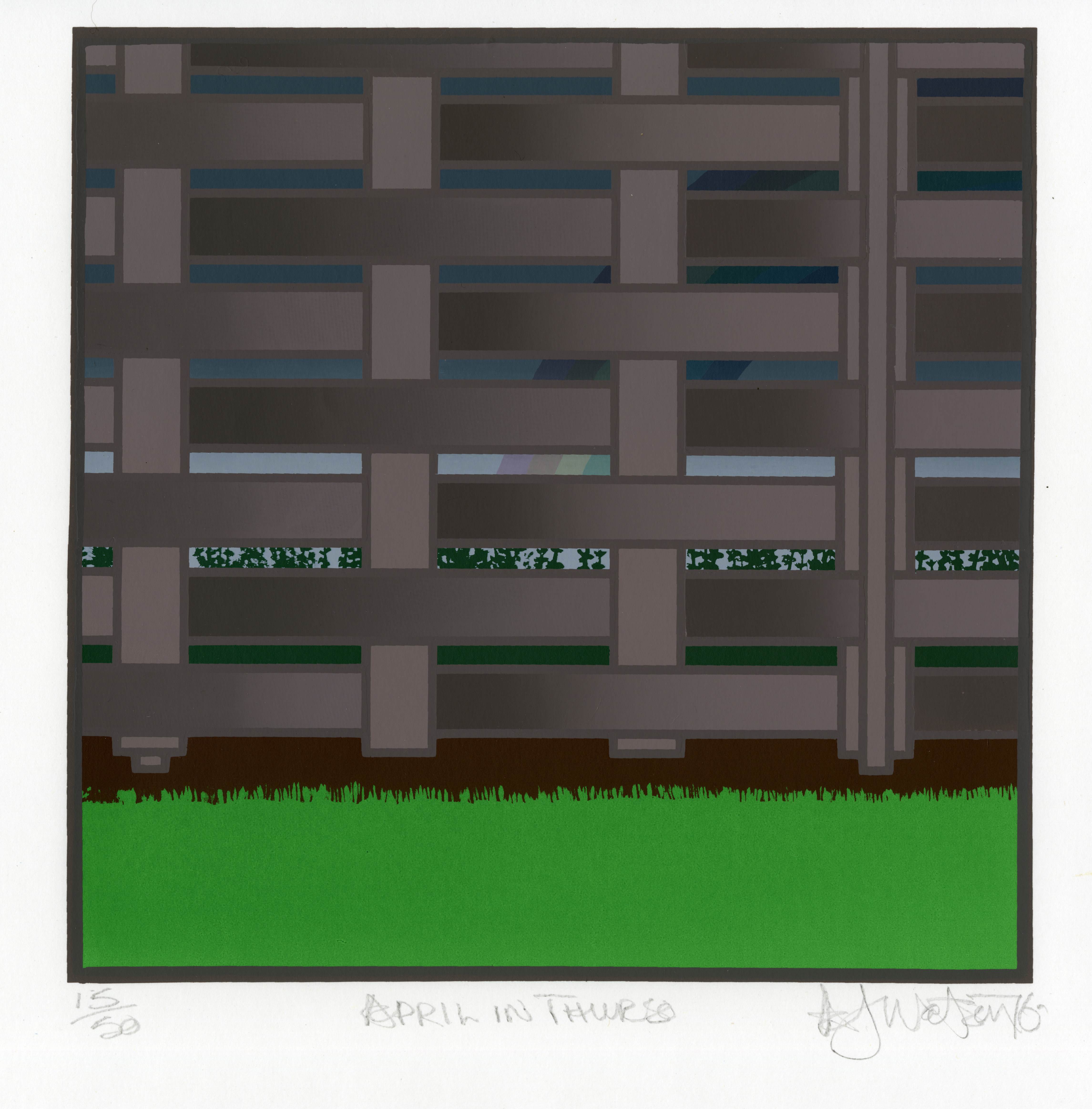
April: Arthur Watson PPRSA, April in Thurso. Screenprint.
Arthur Watson graduated in Design from Gray’s (studying under George Mackie and Malcolm McCoig, two highly respected tutors). He was one of only two students from his graduating year who did not go on to take a teaching qualification from the College of Education. Alongside Ian Fleming, Watson was a driving force in the establishment of Peacock. He contributed significantly to its subsequent success, serving as both Master Printer and Director for many years. Amongst his many talents, Watson is also an accomplished folksinger. The inspiration for this work came from the view from a house in Thurso. Watson and the Irish band The Fureys had been invited to perform at the Thurso Folk Festival. They had been invited for dinner before their gig by one of the organisers. This was the view from the dining room, complete with rainbow.
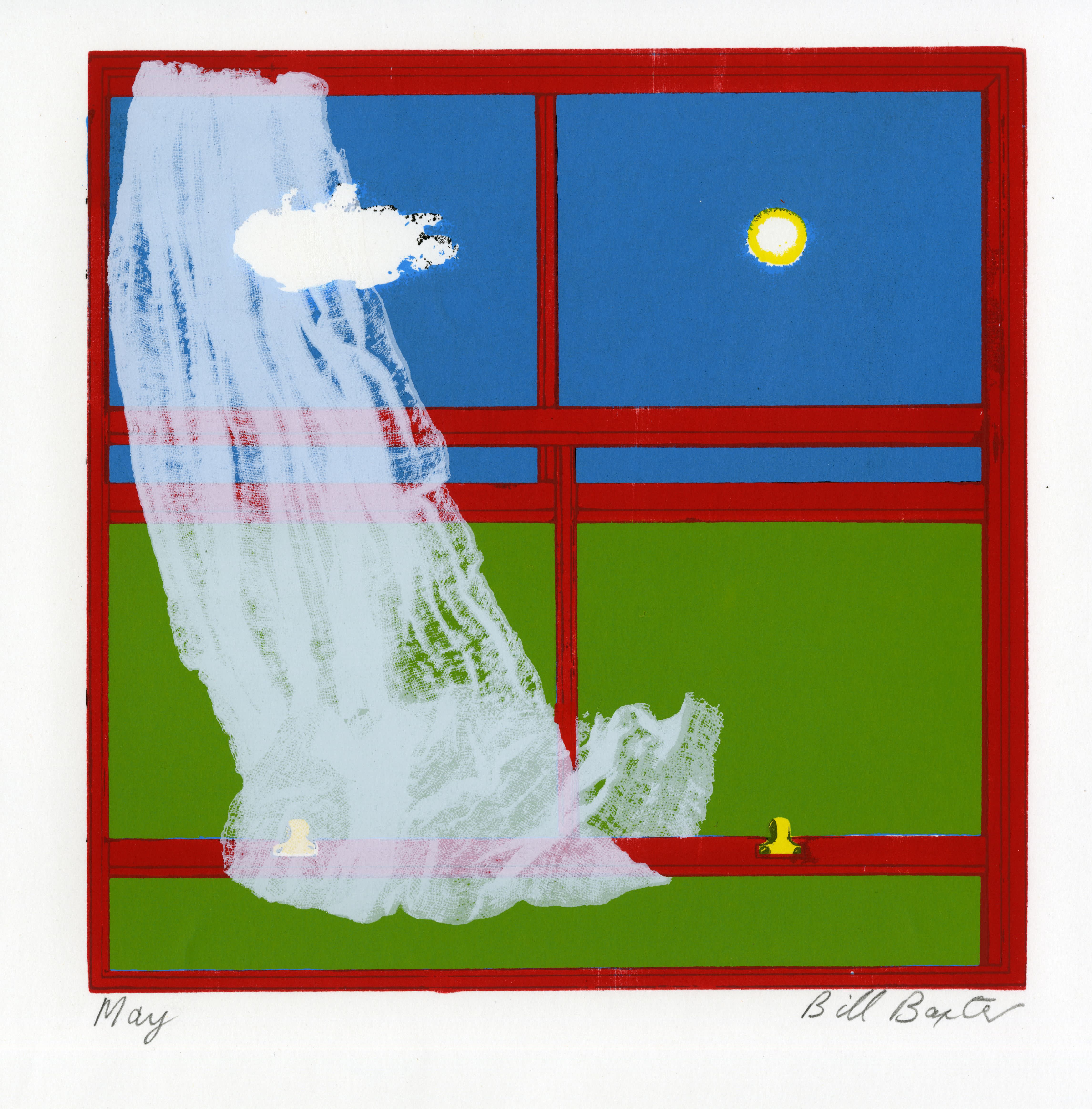
May: Bill Baxter, Untitled. Screenprint.
Baxter had his own etching press, and his printmaking experience lay largely in that medium. Aberdeen born and bred, Baxter had gone through both Gray’s and the College of Education. At the time this print was made, Baxter was Head of Art at Aberdeen’s Torry Academy. An eminently practical individual, Baxter was a regular presence at Peacock.
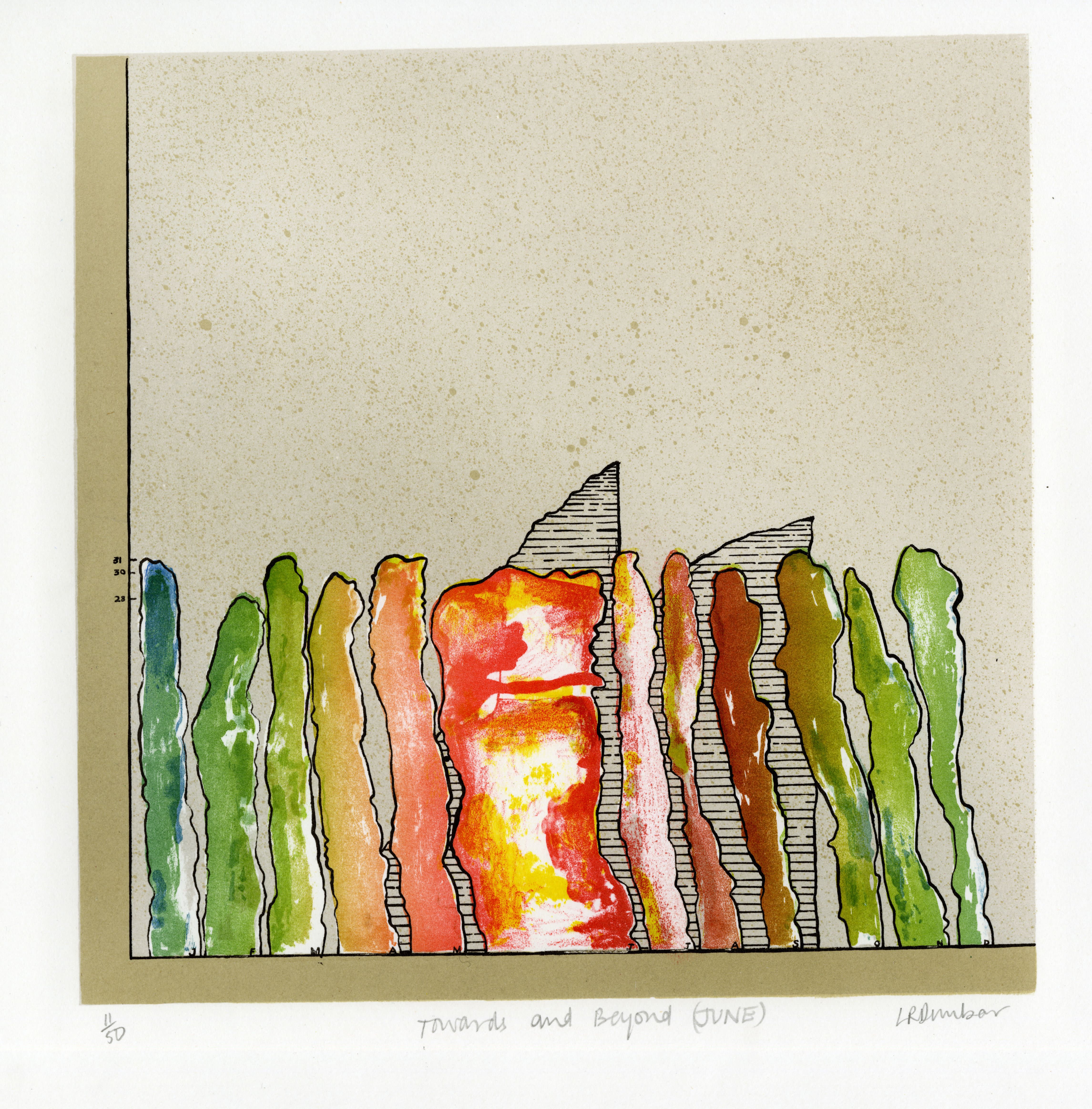
June: Lennox Dunbar RSA, Towards and Beyond. Lithograph.
The imagery responds to the length of days and ambient temperatures as Summer approaches. June is shown as the longest and the warmest. This may be the only lithograph ever made by Dunbar, and was certainly his first work in that medium. His printed work up to this point had also been mainly monochromatic so it marked a significant departure from his normal comfort zone, exactly as the Board had hoped.
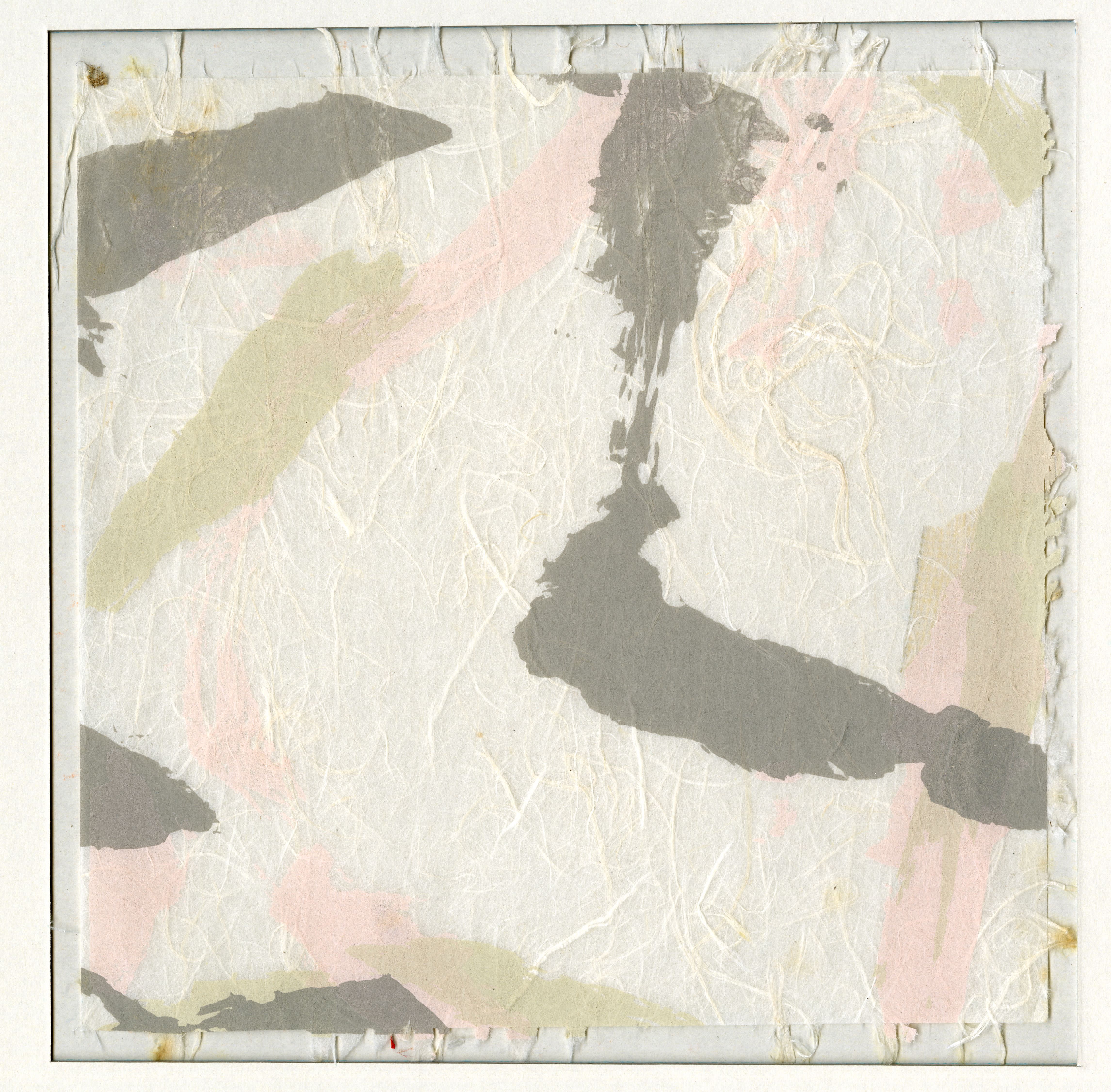
July: Ian McKenzie Smith PPRSA, Untitled. Screenprint.
Smith’s appointment as Director of Aberdeen Art Gallery heralded a period of expansion, and innovation in exhibition programming. The Aberdeen public was introduced to exciting and unexpected work being shown and acquired. Smith was also an established watercolourist in his own right. This was his first venture making a print on the premises. A quick worker, the print was editioned over the course of a weekend. Smith was an admirer of handmade papers and would purchase his stock from the original Paper Chase store in London. Having been bought for one-off watercolours, the use of these papers for the print resulted in a variety of colours being deployed across the edition. Great care had to be taken to avoid cutting the paper fibres when trimming the paper to size.

August: Bob Bain, August Tan. Screenprint.
Bain was a year below Arthur Watson at Gray’s but was an older student. Branded a modern romantic, his work to this point was exclusively linocuts. He was one of the artist’s featured in the Calendar Suite who worked at Peacock. Bain died tragically young, but his legacy has been preserved in a body of work, comprising an impression of virtually each of his printmaking work, recently gifted to Aberdeen Art Gallery.

September: Frances Walker RSA, Untitled. Lithograph.
Walker was the first member of staff at Gray’s to take an interest in the founding of Peacock. Watson had been amongst her students, though he did not graduate in printmaking. This typical example of Walker’s draughtsmanship was printed on tinted paper. It was the artist’s first collaborative piece with Peacock; the first of many.
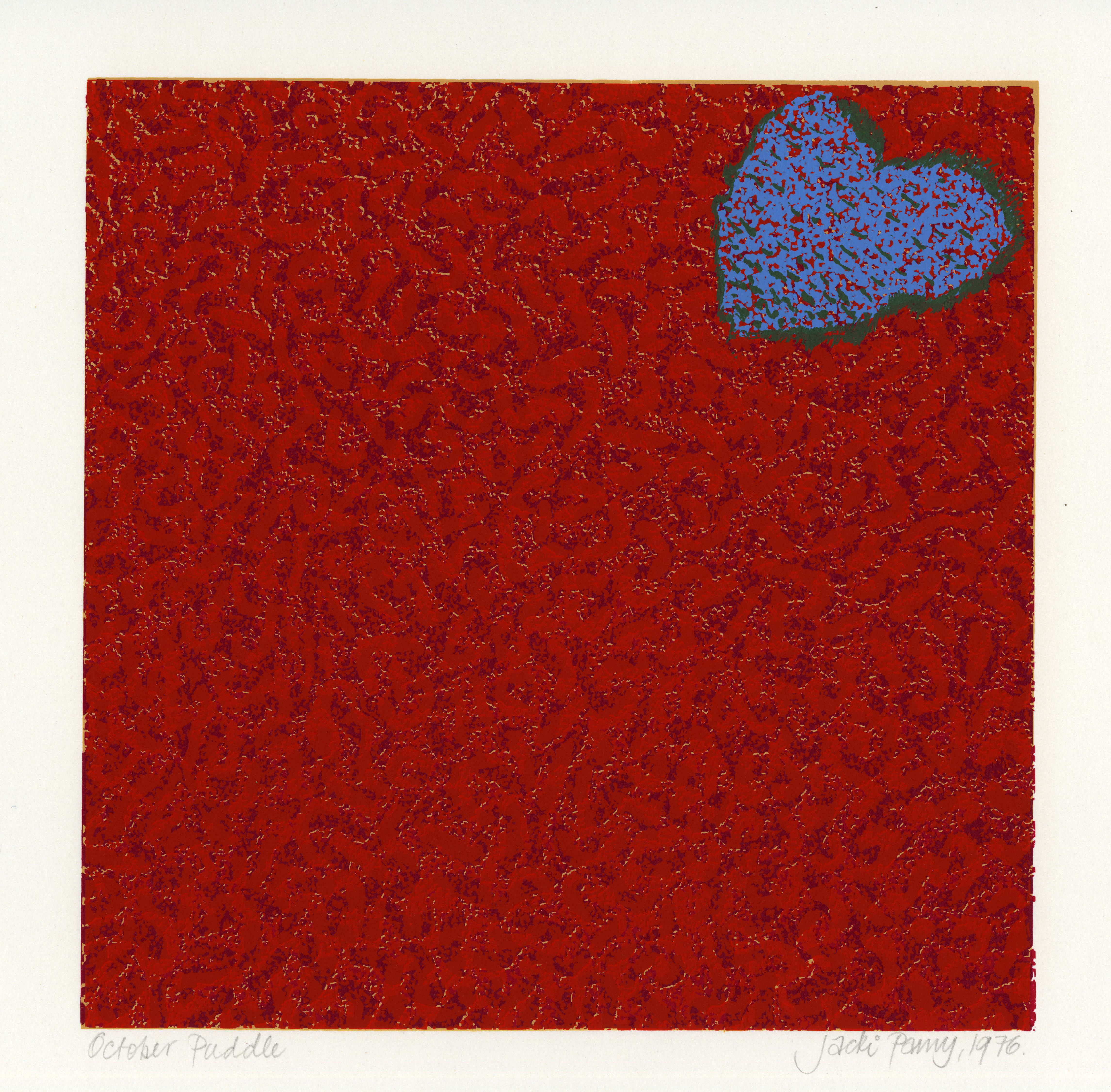
October: Jacki Parry RSA, October Puddle. Screenprint.
At the time Parry was in her post diploma year at Glasgow School of Art (GSA). GSA had Phillip Reeves as Head of Printmaking but provided little or no opportunity for screenprinting. For her graduation show the previous year, Parry had contacted Peacock to help print a work for her.
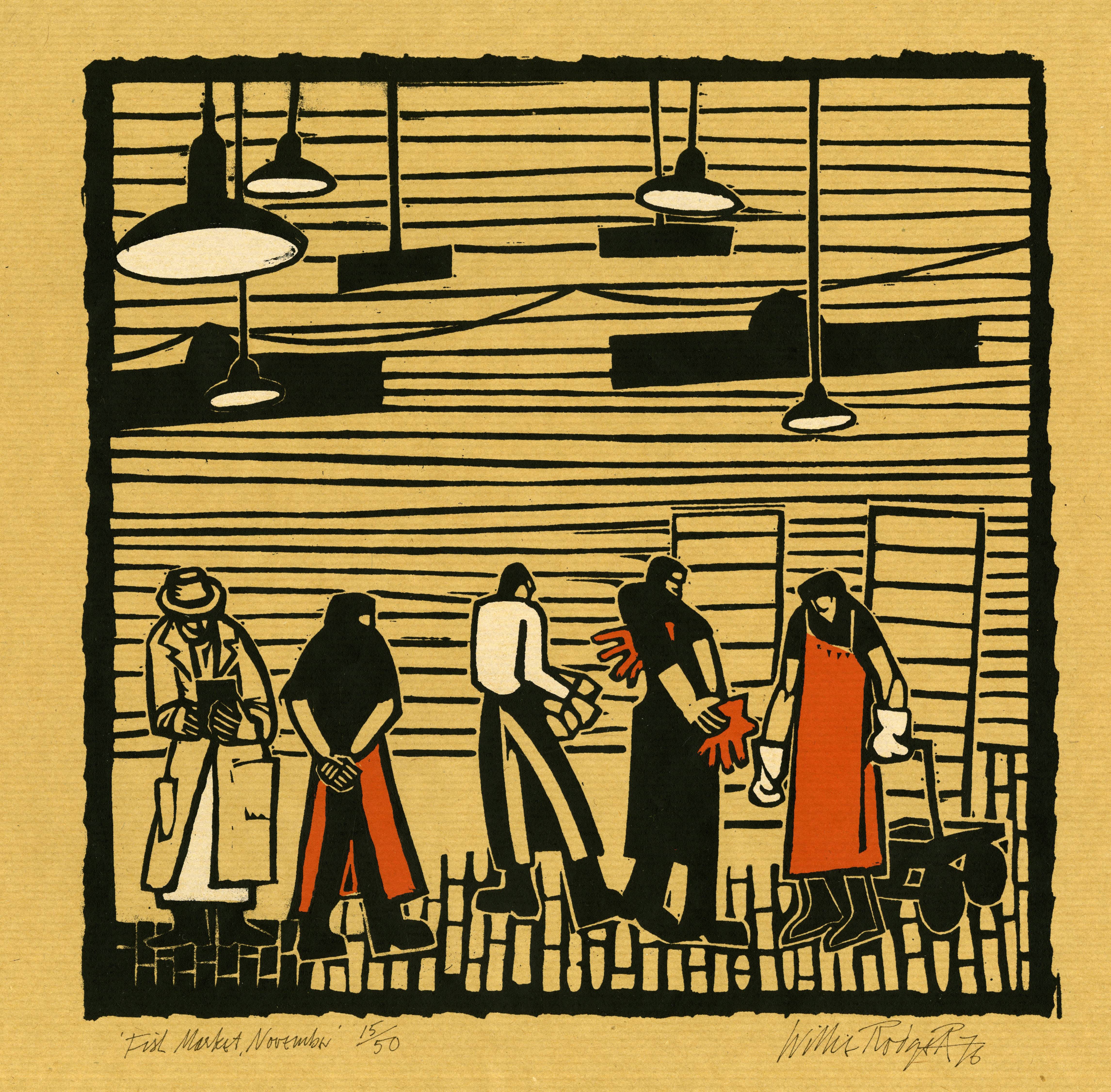
November: Willie Rodger, Fish Market, November. Screenprint.
Rodger had produced a series of linocut and woodcut prints (his preferred mediums) of the Glasgow Fishmarket in the early 1970s. They included views of the Briggait building, as well as of the fishporters and merchants. These were made in situ in the early morning as he waited for his brother-in-law’s fish lorry to be loaded. Working from a linocut, Rodger moved into the realm of screenprinting in which he had no experience. This was the first time Rodger and Peacock worked together. Their relationship was to last for decades.
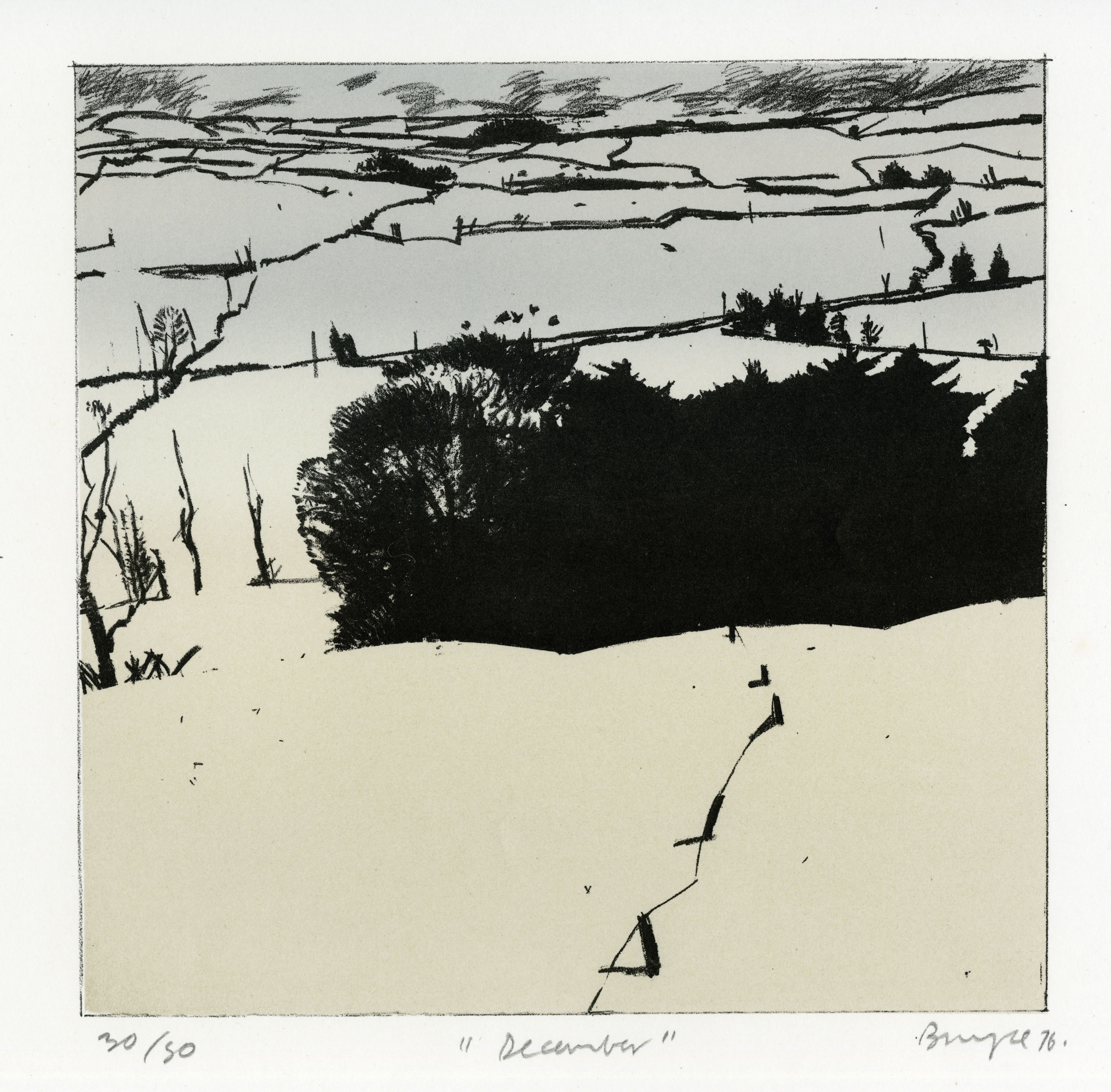
December: Gordon Bryce RSA, Untitled. Lithograph.
Bryce was a painter rather than a printmaker. Nonetheless, his evocative wintery print signalled a new development which his paintings were to take. Up to this point he had been working largely with abstraction. Landscape, particularly of Aberdeenshire and the West of Scotland then began to dominate his output. Bryce was born in Edinburgh and studied painting at Edinburgh College of Art under Philipson and Gillies. After graduating he was appointed a lecturer in Printmaking at Gray’s in Aberdeen. From 1986 to 1995 he was head of Fine Art there.
The Calendar Suite proved popular with the buying public, and revealed a way of working which became a benchmark for Peacock. This collaborative working with non-printmakers, and exploration of new media with established printmakers, led to an impressive catalogue of projects in the years that followed the publication of the Calendar Suite.
The assistance of Arthur Watson PPRSA in the preparation of this blog post is gratefully acknowledged.

